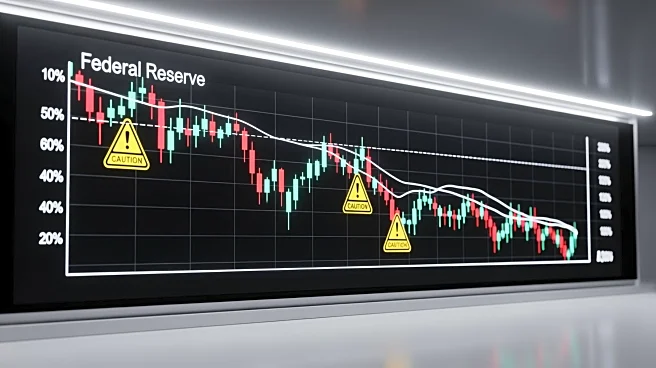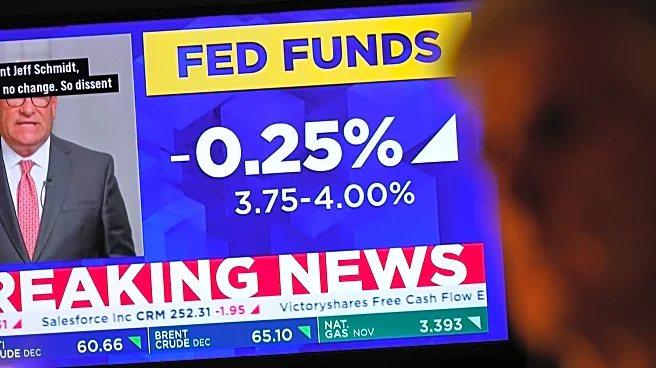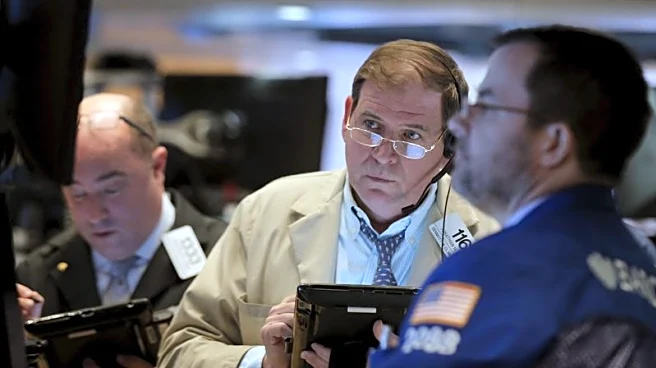What's Happening?
The S&P 500 has experienced a 17% rally this year, nearing the 7,000 mark, driven by a surge in bullish options activity. This has led to a significant increase in the calls-to-puts traded ratio, reaching
its most bullish level in four years. However, recent declines in major tech stocks, such as Meta and Microsoft, have caused the S&P 500 and Nasdaq to lose ground. Concerns over increased spending on artificial intelligence and the pace of monetary policy easing by the U.S. Federal Reserve have contributed to this downturn. Options dealers are currently in a 'short gamma' position, which could lead to exaggerated market swings.
Why It's Important?
The current market dynamics highlight the influence of options trading on stock market volatility. The 'short gamma' positioning of options dealers means that any significant movement in the S&P 500 could be amplified, affecting investor sentiment and market stability. The tech sector, particularly companies like Meta and Microsoft, plays a crucial role in the index's performance. As these companies face challenges related to AI spending, their stock performance could impact broader market trends. Investors and analysts are closely monitoring these developments, as they could signal potential shifts in market momentum.
What's Next?
Market analysts predict a potential pullback in U.S. stock indexes, with a window for a 3% to 5% decline in the coming weeks. This is due to the current positioning of options dealers and the recent peak in investor interest in tech stocks. The Federal Reserve's monetary policy decisions will also be a key factor to watch, as they could influence market movements and investor confidence. Stakeholders will be observing how tech companies manage their AI investments and whether this will lead to further market adjustments.













